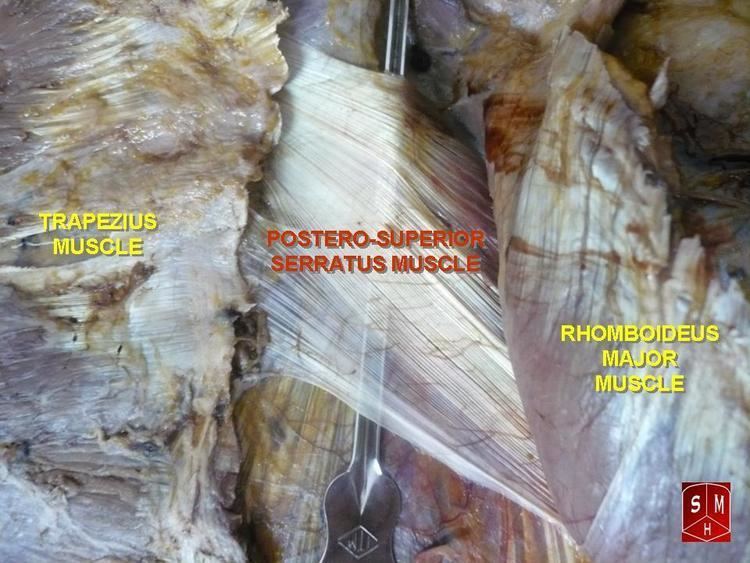TA A04.3.01.011 | ||
 | ||
Origin Nuchal ligament (or ligamentum nuchae) and the spinous processes of the vertebrae C7 through T3 Insertion The upper borders of the 2nd through 5th ribs Nerve 2nd through 5th intercostal nerves Latin Musculus serratus posterior superior | ||
The serratus posterior superior is a thin, quadrilateral muscle, situated at the upper and back part of the thorax, deep to the rhomboid muscles.
It arises by a thin and broad aponeurosis from the lower part of the ligamentum nuchae, from the spinous processes of the seventh cervical and upper two or three thoracic vertebrae and from the supraspinal ligament.
Inclining downward and lateralward it becomes muscular, and is inserted, by four fleshy digitations, into the upper borders of the second, third, fourth, and fifth ribs, a little beyond their angles.
The function of serratus posterior superior is to elevate second to fifth ribs, which aids deep inspiration.
References
Serratus posterior superior muscle Wikipedia(Text) CC BY-SA
